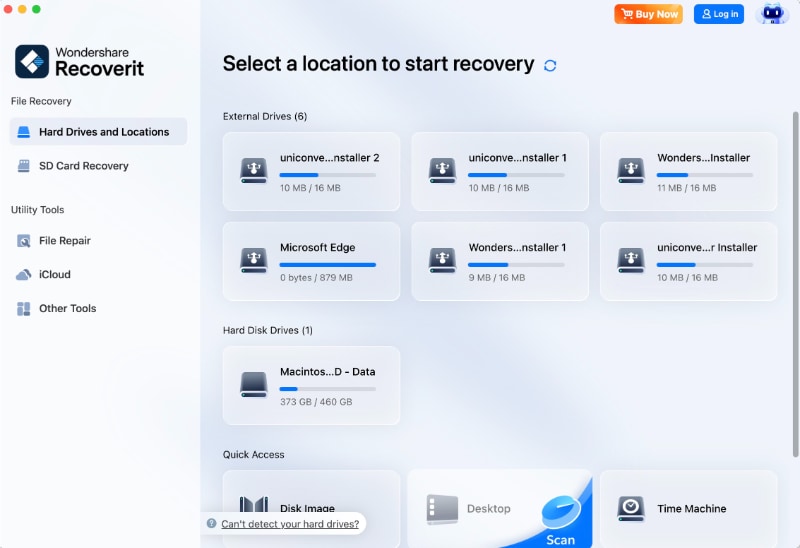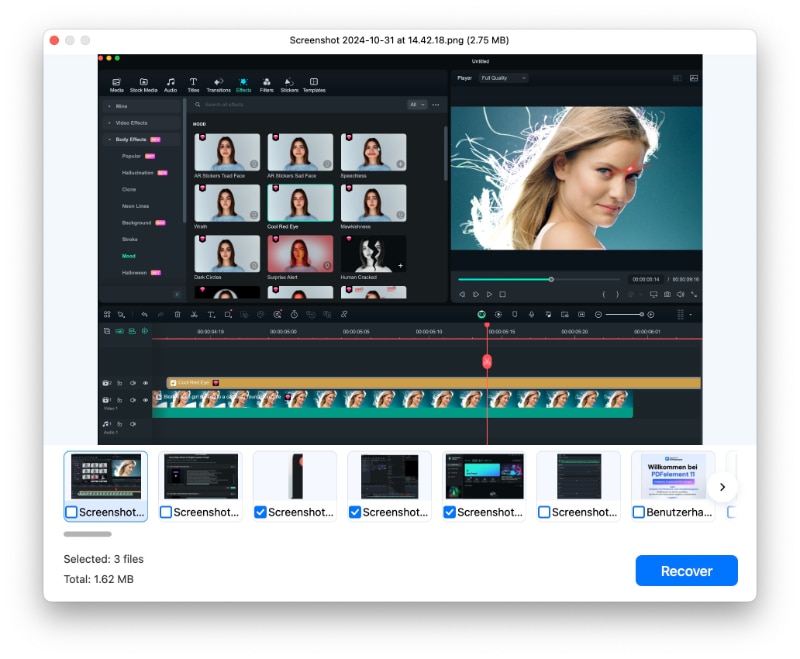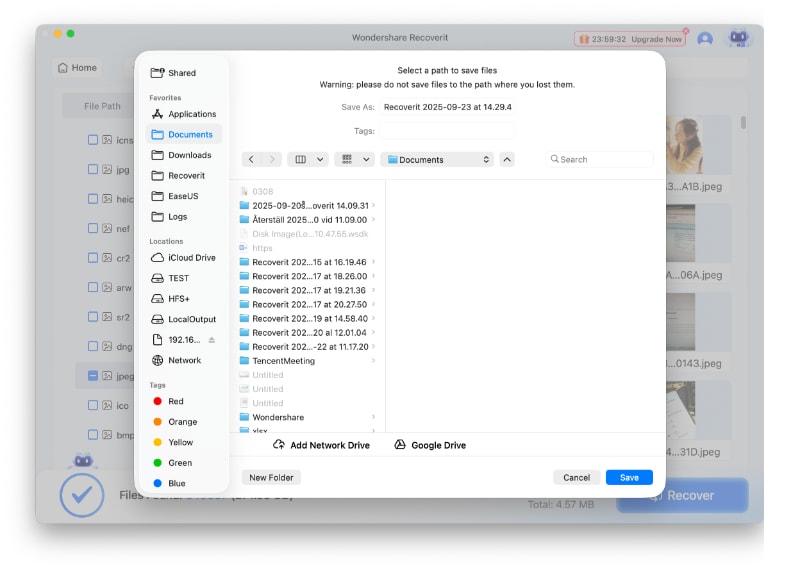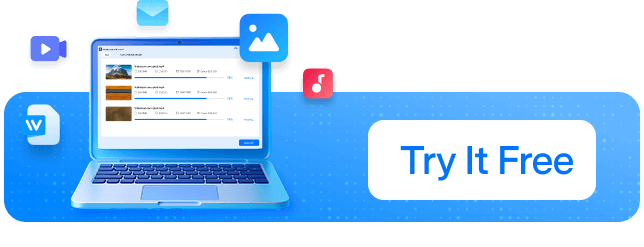Few Mac users know they can multi boot their system to add multiple macOS or other platforms on a single machine instead of purchasing new computers. Multi booting Mac opens up a broad range of options while also solving many issues with application compatibility. While you get to preserve the current macOS on your Mac, you can add Windows and Linux to the ripe benefits of the platforms on one machine. Now you are wondering how to multi boot Mac?
No matter for what reasons you are looking to multi boot Mac, we have provided a comprehensive guide with easy steps in this article to achieve it. Follow the article to install Windows and Linux on your Mac system with proven steps. Furthermore, you can also learn about the advantages of Mac multi boot for multiple reasons.
In this article
Part 1: What is Multi Boot Mac and Its Advantages
Before we proceed towards how to multi boot a Mac, you need to understand what multi boot Mac means. A Mac multi boot means a setup of a multi boot environment resulting in which your system can boot from one of the multiple installed operating systems such as macOS, Windows, or Linux. So when you multi boot your Mac, it means that installation and run, multiple operating systems, including macOS, Windows, and Linux, while the first macOS is still operational.
You can choose which OS to boot into during the boot process or set the default OS to boot into when the Mac starts. Apple provides native dual boot utilities that leverage partitions and Boot Camp Assistant to allow Mac users to run another macOS, Linux, or Windows operating system alongside their Mac.
Some of the advantages of Mac Multi boot are:
- When you multi boot your Mac with other operating systems, such as Windows and Linux, the second and third OS will function as the macOS with full access to the processor and memory.
- For many Mac users, updating their macOS might cause issues due to bugs in new updates. Therefore, multi booting your Mac with multiple versions of macOS on a single Mac can help you enjoy the latest macOS version while also retaining the previous version.
- It also helps with dual advantages with application compatibility. For instance, if you have a legacy application that can not run on new macOS versions and also a new application that can not run on older macOS versions. Then, multi boot Mac with multiple macOS versions can solve both the issues in one shot.
- There are many tools or apps available that are Windows or Linux specific, which are also not available for Mac systems. Mac multi boot allows you to run platform-specific applications that are not available for macOS.
- If you are involved with multi-platform application developments, then multi boot Mac with Windows and Linux on a single device can be an ideal scenario.
- Similarly, if you need a test environment to run your application on multiple platforms, then Mac multi boot with other platforms can solve the issue.
Part 2: How to Multi Boot Mac With Windows and Linux
Now that you know are advantages of multi boot Mac and the reasons behind it. You can now move to the required steps and preparations to install Windows and Linux on your Mac. For Windows installation, you can use the Boot Camp Assistant and install a third-party boot manager fora better booting option during startup.
Here are the following steps to multi boot a Mac with Windows and Linux using Boot Camp Assistant:
To Create Partitions:
Step 1: First, launch “Disk Utility” from the “Applications” or press the “Command + Space” keys simultaneously and type “Disk Utility” and “Return” keys to launch it on your Mac.

Step 2: To view the volumes on your hard drive, click the "drop-down" menu next to the "View" button in the toolbar and select "Show All Devices".
Step 3: Create a new volume by selecting the "Home" or "Macintosh HD" volume on the left and clicking the "+" button in the top toolbar.

Step 4: Next, specify the storage limit depending on the Windows or Linux OS space requirement specifications by clicking on the "Size" options.
Step 5: Provide the “Name” of the partition matching the OS you intend to install on it. Then, select the file system on the “Format” option, choose “Mac OS Extended” for macOS, “Ms-DOS” for Windows, and “Free Space” for Linux OS.

Step 6: To add your new volume to the Mac, select the "Add" option. Wait for the volume creation to complete. Repeat the volume creation process for another operating system.
To Install Windows:
Step 1: After creating partitions, to install Windows on your Mac, first, download the Windows ISO disk image from Microsoft and select the 64-bit version of Windows. Also, save the ISO image somewhere other than the Downloads folder on your Mac.
Step 2: Next, navigate to the “Applications” on your Mac and select the “Utilities” options. Then, click on the “Boot Camp Assistant” option from the list of applications.

Step 3: Click on the “Continue” button after you go through the introduction on the screen.

Step 4: On the next screen, select the “Create a Windows install disk” and “Install Windows” options and click on the “Continue” option.
Step 5: Click on the “Choose” option to choose the Windows ISO image file you have downloaded. Then, insert your USB drive into your Mac and select the drive as the destination disk to save the ISO image file. Click on the “Continue” option to create the Windows USB installation disk.
Step 6: Wait for your Mac to create the installation disk for Windows and click on “Continue” when it is done.
Step 7: When prompted, use the slider to select the required size for the Windows partition. However, it is recommended at least 64GB for Windows. Then, to create the Windows partition, click "Install". Once the partitioning process is complete, your Mac will resume with the Windows installer.

Step 8: Lastly, follow the onscreen instructions to install Windows on your Mac. Wait for the Boot Camp to install all the required drivers for Windows.

Step 9: After the process is completed, your Mac will restart. During the restarting of the Mac, you can press and hold the “Option” key to select macOS to boot into your Mac.
To Install Linux:
Step 1: After installing Windows on your Mac, you can now proceed to install Linux on the other partition you have created with the volume name “Linux”.
Step 2: Before proceeding you might first need to install the “rEFInd” boot manager on your Mac, since the standard boot manager can not recognize Linux OS to boot from. Download and install the “rEFInd” boot manager from the “Terminal”, and also disable “System Integrity Protection” in macOS.
Step 3: Next, download the latest version of the Linux disk image and create a USB installer of Linux.
Step 4: You need to enable booting from an external drive on your Mac. So restart your Mac while holding the “Command+R” keys to boot into macOS Recovery. Select the “Utilities” and then click on the “Startup Security Utility” option.
Step 5: Enable the “No Security” option under “Secure Boot” and enable “Allow booting from external or removable media” under the “Allowed Boot Media” section.

Step 6: Now, connect the Linux bootable USB drive and restart your Mac. Press and hold the “Option” key until you see the bootloader screen. Select the “Ubuntu Boot EFI” option and press the “Return” key.

Step 7: After the Ubuntu installation screen loads, follow the onscreen instructions to continue installing Linux.
Step 8: Choose the “Normal Installation” and “Install third-party software” option on the next screen. Click on the “Continue” option to proceed.

Step 9: Then, locate and select the partition volume you created with the “Linux” name and click on the “Install Now” button.

Step 10: Wait for the installation process to finish and follow the onscreen prompts.
Once the process is completed, restart your Mac to choose between macOS, Windows, or Linux after pressing the “Options” key during the booting process.
Part 3: What are MacOS+Linux+Windows Multiboot Tips You Should Know
If you intend to run macOS, Linux, and Windows on your Mac with multiple boot on a single computer process, then you might have to follow some measures to effectively run them all together. To manage this powerful setup on a single machine requires a considerable amount of calculations, precautions, and technical knowledge. Therefore, here are some of the simple MacOS+Linux+Windows Multiboot Tips to follow for effective Mac multi boot:
- If you are going with multi boot on your Mac, first determine which OS is going to be responsible for the disk partition. In case you choose Mac, then you have to go with Disk Utility for any further partitions to install multiple OS.
- You will need a couple of USB drives depending on how many OS you want to multi boot Mac. Make sure to create bootable USB drives for each OS, you want to install.
- Ensure to install all the required third-party drives on each operating system on your Mac to avoid any malfunction with connected devices.
- Install a reliable boot manager to boot multiple OS on your Mac. Since the standard boot manager does not support Linux-based OS, you should get yourself a reliable boot manager like rEFInd.
- It is better to install the operating system in the order of macOS, then Windows, and lastly, Linux to efficiently align the boot loaders on your Mac.
- Often, some of the components on the Mac might not be compatible with another operating system even after finding the right drivers. Check with the manufacturer for any alternative methods to make it compatible with a specific OS.
Part 4: How to Recover Data on Mac After Multiboot Fails
Now that you successfully multi boot Mac with multiple operating systems. It is time to find out how to recover lost or deleted data in case something goes wrong. Even though you have set up a backup option for your data on Mac, sometimes, you might need to rely on robust data recovery tools to retrieve data not on backups. In these situations, your best option is the Recoverit Data Recovery tool for Mac, which can help you retrieve lost, deleted, formatted, or damaged data from your Mac. Whatever the reason, you can recover any sort of data, including images, videos, documents, and other important files.
Key features of Recoverit to recover data on Mac:
- You can review recoverable files before retrieving them to ensure that the correct data is retrieved.
- You may retrieve a wide range of file formats, including videos, images, documents, messages, and more.
- It works with many kinds of storage devices, such as hard disks, SSDs, USB drives, memory cards, and external drives.
Here are the steps to follow to recover data on a Mac using the Recoverit tool:
Step 1: First, go to the official Recoverit Data Recovery website and download and install the program on your Mac. However, ensure that the application is installed on a different drive than the one from which you want to recover data.
Step 2: Launch the tool and select "Hard Drives and Locations" from the left-hand side panel. Next, select the drive from which you want to recover data from the "Hard Disk Drives" section.

Step 3: To start scanning, click the "Start" button in the lower right corner of the selected drive tab.
Step 4: Wait for the tool to scan and recover files from the selected partition. Once the scan is finished, you can preview the recovered files to ensure the data is correct.

Step 5: If you are satisfied with the recovered data, click the "Recover" option to restore the lost or deleted data on your Mac.

Step 6: Select the location where you want to save the retrieved data on your Mac. Also, choose a new location to store retrieved data from the original location.

Related Video >>: How to Recover Files From Mac?
Conclusion
Although multi boot Mac can be a complicated process, it offers numerous advantages with a powerful setup. You can run multiple macOS on a single machine or choose to install Windows and Linux on a single Mac. Thankfully, Apple provides Boot Camp Assitant to install Windows as another OS option on Mac, but you need to make some technical adjustments to install Linux. Furthermore, due to any unfortunate incident, if you lose data on your Mac, then use Recoverit Data Recovery to instantly retrieve lost or deleted data on your Mac.
Try Recoverit to Recover Accidentally Lost Data from Mac
Security Verified. Over 7,302,189 people have downloaded it.
FAQ
-
1. Can you have multiple OS on Mac?
You can have multiple OS on your Mac by multi booting the machine. You can either install multiple versions of macOS on a single system or multiple other platforms. As explained in the above article, it has many advantages to multi boot Mac with multiple operating systems. You can go through the steps in the article to install multiple OS on your Mac. -
2. How do I switch on Multi boot Mac?
You can switch between operating systems on a Mac by restarting the system and pressing the Options key to select the choice of your OS you want to boot from. If you have installed a third-party boot manager on your Mac, then every time you turn on the Mac, it will provide options to boot into the desired operating system. -
3. Is macOS multi user?
Yes, macOS is a multi-user operating system that enables multiple users on different machines or terminals to access a single machine running the same operating system.



 ChatGPT
ChatGPT
 Perplexity
Perplexity
 Google AI Mode
Google AI Mode
 Grok
Grok























